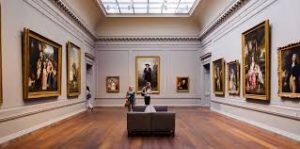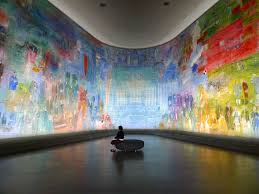nastya
CLASSIFICATION OF WORKS OF THE FINE ART
 Classification of works of art by type, material, technique and genre.
Classification of works of art by type, material, technique and genre.
Works of fine art are divided into the following main types: painting, graphics, sculpture, decorative and applied art. Recently, a fifth can already be added to the traditional four types of fine art – technical arts, which include art photography and computer graphics. Painting, in turn, is divided into easel and monumental. Graphics for drawing, watercolors and printed graphics. The sculpture is round (monumental, easel, small forms) and relief (bas-relief – when less than half the volume emerges from the plane and the relief is more than half). Even more varieties in DPI: ceramics, hot enamel, batik, tapestry, forging, painting on wood, metal, etc. Continue reading
PRINT. CLASSIFICATION AND VARIETIES (part 1)
 An engraving (from French estampe) is a generalized name for works of printed graphics, which is an engraving or any other print on paper from a printing form.
An engraving (from French estampe) is a generalized name for works of printed graphics, which is an engraving or any other print on paper from a printing form.
There are four types of prints: high (convex) printing, flat printing, intaglio printing and screen printing. Convex printing includes woodcut, linocut and cardboard engraving. For flat printing – lithography with all its varieties and monotype. Intaglio printing: etching, engraving, mezzo-tinto, dotted line, dry needle, aquatint, reserve, lavis, soft varnish, pencil style. Screen printing – silk screen printing.
Let us consider in more detail the main print techniques in chronological order. Continue reading
PRINT. CLASSIFICATION AND VARIETIES (part 2)
 Lavis (from Fr. lavis – wash) – a kind of aquatint. Known since the 1780s. The drawing is applied by needle etching. The tonality is obtained by etching with acid, which is applied to the board with a brush. The boundaries of the tone spot are sharply defined. The print of Lavis resembles a work executed in watercolor. Lavis is very close to aquatint in terms of its external visual characteristics, but differs from it in watercolors of a tone spot, softness and fuzziness of outlines. Like aquatint, Lavis is used in combination with other etchings, for example, with a dry needle. The technique allows you to get no more than 30 quality prints from one board.
Lavis (from Fr. lavis – wash) – a kind of aquatint. Known since the 1780s. The drawing is applied by needle etching. The tonality is obtained by etching with acid, which is applied to the board with a brush. The boundaries of the tone spot are sharply defined. The print of Lavis resembles a work executed in watercolor. Lavis is very close to aquatint in terms of its external visual characteristics, but differs from it in watercolors of a tone spot, softness and fuzziness of outlines. Like aquatint, Lavis is used in combination with other etchings, for example, with a dry needle. The technique allows you to get no more than 30 quality prints from one board.
Zuev Alexey. Lada. Molodetsky Kurgan – Reservazh Reservazh (from French réservage) is a type of etching. The reserve first appeared in France in the second half of the 19th century. Continue reading



